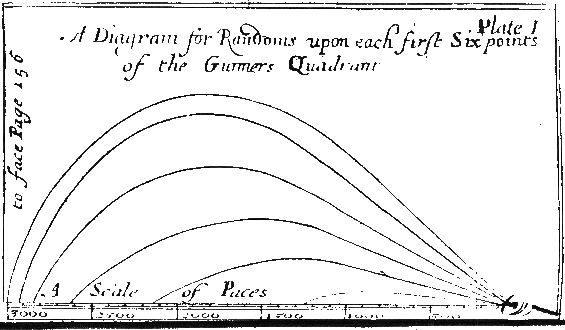 |
THere are Three material causes of the greater violence of any Shot made out of a great Gun, viz. the Powder, the Piece, and the weight of the Bullet.
Powder is compounded of Three Principles or Elements, Salt-Petre, Sulphur and Coal, whereof it is that which causeth the greater violence.
Although Salt-Petre be indeed the only and most material cause of the violence, and that Powder is made more forcible, wherein is the greater quantity of Petre ; and of those forementioned Ingredients, there is a certain proportion to be used, as to render it the most fit for Service upon several considerations; of which more hereafter.
Although Powder is the principal and efficient cause of the Force and violence of any Shot, yet such due consideration ought to be had to the proportions therein used in the Art of Gunnery, as giving more or less than the due proportion, it may diminish the force of the Shot.
There is such a convenient weight to be found of the Bullet, in respect of the Powder and Piece, as the Bullets Metals being heavier or lighter than that weight, shall rather hinder than farther the violence of the range of the Shot.
There is such a convenient Porportion to be found for the Length of every Piece to its Bore, or the Diameter of the Bullet, in respect of the Powder and weight of the Ball; as either increasing or diminishing that Proportion, it shall abate or hinder the violence of the Shot.
Besides these three most material Causes of violence, the several Randoms or different Mountures of Pieces will cause a great Alteration, not only in the far shooting of all Pieces, but also of their violent Battery.
Besides these aforementioned, there are many other accidental Alterations which may happen, (especially at Sea,) sometimes by reason of the Wind, the Rarity or Condensation of the Air, the heating or cooling of the Piece ; The different charging by ramming the Powder fast or loose, by close or loose lying of the Bullet; By the unequal recoil of the Piece, or by reason of the Ship being upon a Tack, and the Gun standing on the wind-ward or Lee-ward side of the Ship, or by the uneven lying of the Piece in the Carriage, with divers such like Accidents, whereof no certain Rules can be prescribed to reduce those uncertain Differences to any certain Proportions : but all these by Practice, Experience and a good judgment are to be performed.
Any Piece being mounted 90 degrees above the Horizon directly to the Zenith, the violent Motion, (being in that situation directly opposite to the Natural ) carries the Bullet in a perfect right-line directly upward, till the form of the violence is spent, and the natural Motion gotten the victory; then doth the Bullet return down again by the same perpendicular Line.
But if any Piece is discharged upon any Angle of Mounture; although the violent Motion contend to carry the Bullet directly by the Diagonal Line, yet as the natural Motion prevails, it constrains it to a Curvity; and in these two Motions is made that mixt Compound or Helical Curvity. And here note, that although the last declining Line of the Bullets Circuit seemeth to approach somewhat to the Nature of a right Line ; yet it is indeed Helical, and mixt so long as there remaineth any part of the violent motion ; but after that is spent, then his motion is absolutely perpendicular to the Horizon.
From whence may be collected this Corrolary, That any Piece being mounted to any degree of Random, shall make the Horizontal range proportional to the Degree of Elevation, of which you have a Resemblance in the Annexed Scheme, Plate I.
 |
Any Piece therefore discharged at any Mounture or Random, first throweth forth her Bullet directly to a certain distance, called the Point-blank Range, and then afterward maketh a Curve, or declining Arch, and lastly finisheth in a direct Line, or nigh inclining towards it; therefore the farther any Piece shooteth in her direct Line (commonly called Point-blank) the more force she hath in the Execution; and the more ponderous the Bullet is, the more it shaketh in battery, although it pierceth not so deep.
The utmost Random of any Piece of Ordnance, is generally judged to be at 45 Degrees of Elevation ; and if you mount your Piece to greater Angle, the Random of the Bullet will be shorter ; and to know the right Range of most Pieces, you may see in this annexed Table, as the Title may inform you, where you may see the Horizontal Range or Point blank, and the utmost Random of each respective Piece, the latter being commonly ten times the distance of the right Ranges.
And for the Right Ranges and Random to several Degrees of Mounture, you may note these ensuing Tables, which is measured by Paces, 5 Foot to a Pace.
| A Table of Right Ranges or Point- blanks at seve- ral Degrees of Mounture. |
A Table of Ran- doms at seve- ral Degrees of Mounture. |
||||||||||||||
|
|
|
|
||||||||||||